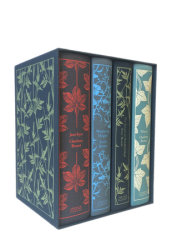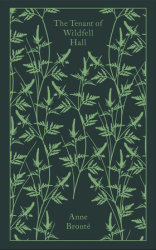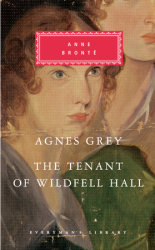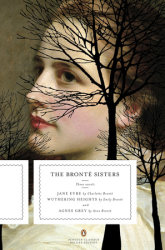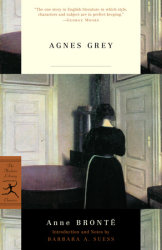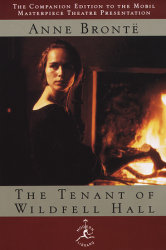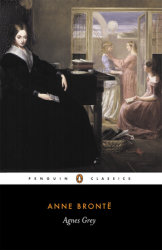Anne Bronte

About the Author
Anne Bronte was born at Thornton, Yorkshire, on January 17, 1820. She was the sixth and youngest child of Reverend Patrick Bronte, an Irishman by birth, and Maria Branwell Bronte, who was from a prosperous Cornish family. Following her mother’s death in 1821, Anne and four sisters and one brother were raised by an aunt, Elizabeth Branwell. The two eldest daughters, Maris and Elizabeth, died in 1825 from tuberculosis contracted at the religious boarding school to which they had been sent.
Anne spent her childhood and formative years in the isolated parsonage at Haworth, Yorkshire, where her father was curate. The Bronte children all thrived in fantasy worlds that drew on their voracious reading of Byron, Scott, and Shakespeare as well as The Arabian Nights and gothic fiction. Anne and Emily worked together on a saga about the fictitious island of Gondal while Charlotte and brother Branwell wrote melodramatic chronicles centered around the imaginary kingdom of Angria. In 1836 Anne entered Miss Wooler’s School at Roe Head, Charlotte and Emily’s alma mater, but withdrew the next year because of illness.
Financial considerations forced Anne to seek employment as a governess. In 1839 she arrived at Blake Hall in Mirfield to tutor the children of Joshua Ingham, a local squire and magistrate. From 1841 to 1845 she was governess at Thorpe Green, the home of Reverend Edmund Robinson located twelve miles from York. In 1843 Branwell Bronte also found work as a tutor at Thorpe Green until suspicions of an illicit relationship with his employer’s wife resulted in dismissal. Branwell’s gradual descent into alcoholism, drug addiction, and madness is reflected in the writings of all three sisters, particularly in The Tenant of Wildfell Hall.
The Brontes launched their literary careers in 1846 with a collection of verse published pseudonymously as Poems by Currer, Ellis and Acton Bell. In 1847 Anne’s first novel, Agnes Grey, was published in a volume together with Emily’s Wuthering Heights. Based on Anne’s experiences as a governess, it exposed the desperate plight of unmarried, educated women driven to take up the only respectable career open to them. Though critic George Moore, perhaps Anne’s greatest champion, later deemed it ‘the most perfect prose narrative in English literature,’ the work was overshadowed by the intense originality of Wuthering Heights, not to mention the enormous success of Charlotte’s Jane Eyre, which had appeared a few weeks earlier.
Anne continued writing; her second novel, The Tenant of Wildfell Hall, came out in 1848. The bold story of a strong-minded woman’s struggle for independence, the book unmasked the dark brutality of Victorian chauvinism but was nevertheless attacked by some critics as a celebration of the very excesses it criticized. Charlotte Bronte, as she later revealed in the ‘Biographical Notice of Ellis and Acton Bell’ (1850), was especially disturbed by it: ‘The choice of subject was an entire mistake. Nothing less congruous with the writer’s nature could be conceived. The motives which dictated this choice were pure, but, I think, slightly morbid.’
The Tenant of Wildfell Hall reminded other reviewers of Wuthering Heights, and it quickly went to a second printing. ‘Every reader who has felt the power of Jane Eyre and Wuthering Heights comes, sooner or later, to The Tenant of Wildfell Hall,’ wrote Bronte scholar Margaret Lane. ‘Anne Bronte, with all the Bronte taste for violence and drama, and with her experience of the same rude scenes and savage Yorkshire tales that had fed the imaginations of her sisters, did not shrink. She used the material at hand, and shaped it with singular honesty and seriousness. . . . [One] discovers from Wildfell Hall that Anne is a true Bronte.’
The final months of Anne Bronte’s life were filled with tragedy. Both Branwell and Emily died of tuberculosis in the autumn of 1848. Anne Bronte succumbed to the same illness at Scarborough on May 28, 1849.









